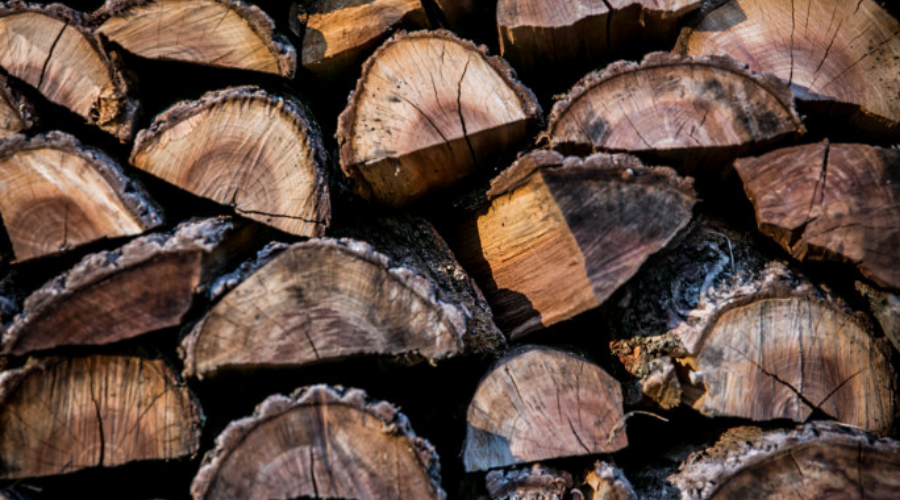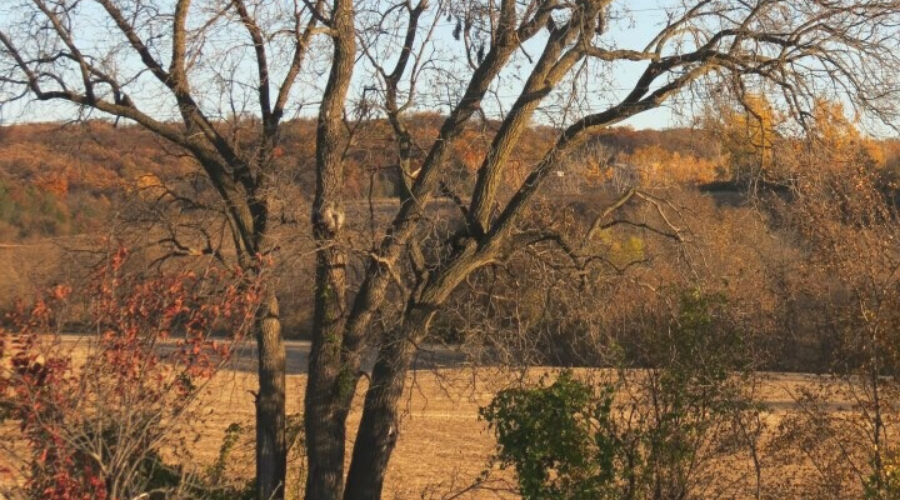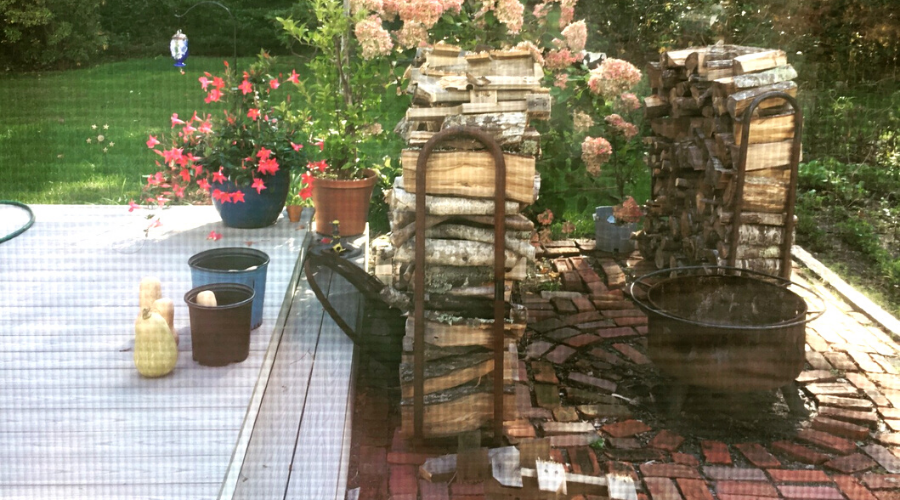Walnut Firewood Details
BTU: 22.2 BTUs
Weight: 4584 greenwood / 3192 dried
Seasoning Time: 6 months to 2 years depending on species
Resin / Sap Content: 8-percent to 14-percent when seasoned properly
Splitting Difficulty: Easy (Black) to medium (English)
Smoke: Low
Smell: Good
Varieties
Black Walnut and English Walnut are the two most prevalent species of walnut trees found in North America. On a global scale, over 20 varieties of walnut trees are commonly found.
This piece will focus on the two main species in the US; Black Walnut and English Walnut.
Black Walnut
Black walnut trees have become somewhat scarce due to their popularity - they are used a lot in wood furniture for their durability. Some furniture made from black walnut trees can last a lifetime.
Black walnut trees can grow up to 150 feet tall. Some varieties of black walnut trees live for more than 200 years. Due to the laborious nature of processing the walnuts from this particular tree, black walnut trees are mainly grown for their wood.
Black walnut trees are shade-averse tree species. So, they preferably grow in sunny groves that feature nutrient-rich, moist soil. A large old Black Walnut tree alone may provide well over a full cord of firewood.
Black Walnut Details:
- Weight Green: 4450 - 5725lbs
- Weight Dry: 2680 - 3450 lbs
- BTUs: 24 million
- Splitting Ease: Medium
- Smoke: Low
- Fragrance: Good
- Burn Time: Excellent
White Walnut
White walnut wood is also known as butternut wood. It is a strong and dense wood that grows quickly in soil that is well-drained. White walnut trees are prevalent and can be found on the banks of streams and on hillsides.
White walnut wood is softer than black Walnut but is still relatively dense. It burns long and clean, containing much less sap than many comparable types of firewood.
On average, white walnut trees tend to live for about 75 years and usually only reach 60 feet in height. They can provide a full cord of wood per tree (if they are 22 inches in diameter or larger).
White Walnut Details:
- Weight Green: 2500 lbs
- Weight Dry: 1900 lbs
- BTUs: 14.5 million
- Splitting Ease: Medium
- Smoke: Low
- Fragrance: Good
- Burn Time: Excellent
English Walnut
The English walnut tree is also called the Persian Walnut. The English walnut tree is actually native to Iran but was brought to the United States by the English.
This tree is now widely cultivated all around North America. In California, Walnut orchards are prized for their high-quality nuts.
The English Walnut can live about 60 years and grows to a height of 60 feet. A very decent height for chopping down and turning into cords of highly efficient firewood.
English Walnut Details:
- Weight Green: 4450 - 5725 lbs
- Weight Dry: 2680 - 3450 lbs
- BTUs: 20 million
- Splitting Ease: Medium
- Smoke: Low
- Fragrance: Good
- Burn Time: Excellent
Walnut Firewood Characteristics
BTU of Walnut
A British Thermal Unit is a metric by which a unit of thermal energy is measured. A BTU represents the amount of thermal energy required to increase the temperature of one pound of water by 1 degree.
A BTU is usually a reference used to describe the energy output in space heaters or air conditioners, but they are also used to describe heat output in firewood.
One cord of walnut firewood can contain the equivalent heat energy output of 24 million BTUs. One cord of walnut firewood contains the energy equivalent of 20,350 cubic feet of natural gas or 152 gallons of heating oil.
Seasoning Time for Walnut Species
Typically speaking, Walnut firewood requires 6-months to 24-months to season. It can take over a year or more for most walnut wood firewood to dry out completely. Up to an additional year is necessary for species with higher moisture content.
For help tracking down one of the best firewood racks for seasoning your own Walnut, you may benefit from checking out our latest guide.
Walnut Firewood Resin / Sap Content
Generally speaking, Walnut firewood has a moderate amount of sap content, but not as much when compared to pine wood or evergreen firewood. When properly seasoned, Black and English Walnut firewood contain between 8-percent and 14-percent moisture content. If improperly dried, the moisture content may still be over 20-percent even after a full year and a half of drying.
Walnut Firewood Smoke
Most types of Walnut firewood burn easily and cleanly if the wood has been seasoned for between one and two years. There is very little smoke put out, so to speak.
Green Walnut, on the other hand, produces clouds of thick and harmful smoke. Green Walnut should never be burned inside in large amounts (kindling is fine).
Smell
For the most part, most Walnut firewood emits a pleasant and somewhat nutty type of smell when burned. Some folks claim it is reminiscent of roasting chestnuts on an open fire.
What do you think about the smell of Walnut firewood? Let us know in the comments section at the bottom of this page!
Common Questions about Burning Walnut for Firewood
Why Are There So Many Walnut Trees? Why is This Tree so Common?
The walnut tree produces territory protecting toxins called juglone. Juglone is toxic to other plants and tree species. Walnut trees produce this toxin to keep other plants and trees from competing for soil nutrients and moisture.
This is the reason why walnut trees grow segregated on their own and why they produce such dense and strong wood.
Is Walnut Wood Difficult to Split?
As long as it has been seasoned for over a year, walnut wood is moderately easy to split in comparison to other types of firewood. However, there is an exception. If walnut trees are grown along a sprawling landscape, then the inner bark could become knotty and forked. It is easier to chop down walnut trees that are tall, straight, and feature a large and expansive canopy.
Why is it Bad to Burn Greenwood?
Greenwood contains over 50-percent of water content. Burning Greenwood will only evaporate the excess water in the wood instead of generating heat. You will also generate more smoke than heat energy by burning Greenwood. If you chop down a walnut tree and split it into planks, store it in a woodshed or on a firewood rack to season for at least a full year.






